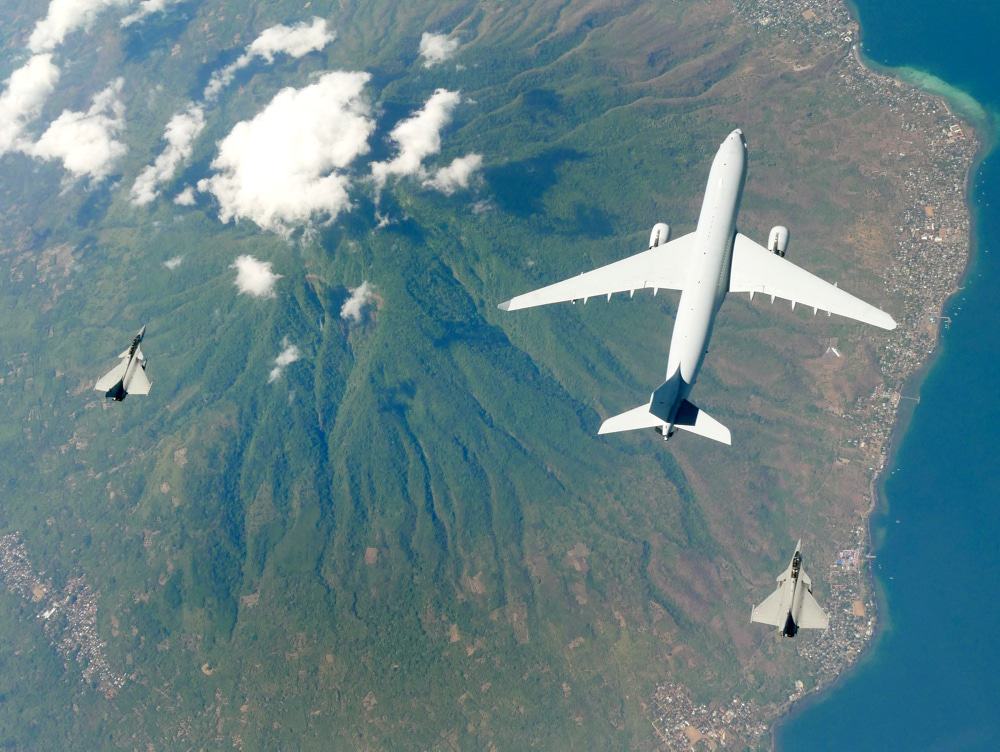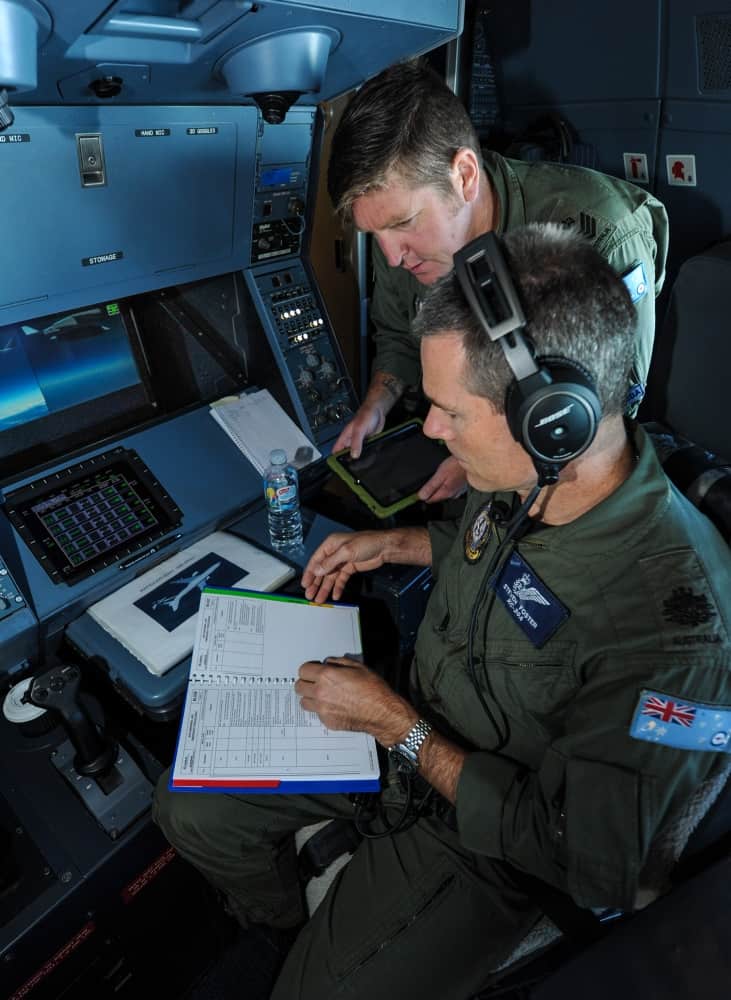Hop in the backseat of an F/A-18 hornet as it is being refuelled by the KC-30A Multi-Role Tanker Transport aircraft. This vision was posted on YouTube by the ADF on 3 April 2018.
Ipswich’s Colin Weekes is not your average servo operator.
An average day for him involves a complicated aerial dance at 550 km/h. After the pilot of his tanker and the pilot of the receiving aircraft are cruising in tandem at 25,000 feet, the mid-air refuelling can commence.
Flight Sergeant Colin Weekes is an air refuelling operator who sits in the cockpit, and can view refuelling on 2D and 3D screens.
He drops a flexible hose out and helps guide it onto the receiving aircraft.
Once the probe fits snugly into the basket, forming a seal, the tanker starts pumping.
But that is just the start.
The flying tanker can fuel two planes at the same time.
“As I’m passing them gas, I am speaking to them on the radio. I’m also looking at keeping the flow rate right and maintaining the correct psi. I’m looking at the cameras and monitoring the fuel offload,” Flight Sergeant Weekes said.
“We have to ensure the temperature of the fuel as it must be above freezing level. We also have to keep the plane balanced and sometimes we have to move fuel around as it sucks out of one compartment, we may be moving it from another.
“I am also responsible for the accurate reporting of the tail numbers and how much fuel they take on so we can send the bill.”

Flight Sergeant Weekes recently assisted the French Air Force (pictured above) fly their Rafales to Exercise Pitch Black 18 held in Darwin.
“We picked them up at the Middle East and they flew 20 hours to arrive in Australia. They wanted to stay over land, so we went over India, Indonesia, Singapore and into Australia,” he said.
“Their planes are really fuel efficient, we only had to refuel them three times between the UAE and Singapore.”
Flight Sergeant Weekes has been in the Royal Australian Air Force for 30 years and has been an air refuelling operator for the past 12 months. He has deployed on three occasions to the Middle East for Operation Okra.
The aircraft has just reached an epic milestone during a routine air-to-air refuelling mission.
On the 6 August 2018, the KC-30A Multi Role Tanker Transport aircraft has delivered 100,000,000 pounds of fuel during air-to-air refuel missions on Operation Okra in the Middle East.
Chief of Joint Operations Air Marshal Mel Hupfeld said there was a large demand for aerial refuelling.

No. 33 Squadron Air Refuelling Operators, Flight Sergeant Colin Weekes (top) and Warrant Officer Steven Foster (front), review operating procedures during a sortie for Exercise Pitch Black 2016. Source: ADF
“The KC-30A has been a significant force multiplier for the Air Force and has proven itself over Iraq as part of Operation OKRA,” Air Marshal Hupfeld said.
“Just one KC-30A can support the deployment of four fighter aircraft over 5000km and has the versatility to refuel a range of different aircraft types.”
Operation Okra is the Australian Defence Force’s contribution to the international effort to defeat the Daesh terrorist threat in Iraq and Syria.
Facts about the Tanker
The KC-30A Multi Role Tanker Transport is a heavily modified Airbus A330 airliner, and enables Air Force to conduct air-to-air refuelling and provide strategic air lift.
It features advanced communication and navigation systems, and an electronic warfare self-protection system for shielding against threats from surface-to-air missiles.
Since September 2014, a single KC-30A has been deployed to the Middle East Region for Operation OKRA.
The KC-30A can carry a fuel load of more than 100 tonnes, and transfer part of that load to compatible aircraft, including:
F/A-18A/B Hornets;
F/A-18F Super Hornets;
E/A-18G Growlers;
E-7A Wedgetails;
C-17A Globemaster III; and
Other KC-30As.
It is also compatible with refuelling P-8A Poseidon surveillance aircraft, F-35A Lightning II, and foreign aircraft such as the F-16C Fighting Falcon and B-1B Lancer.
The KC-30A MRTT can remain 1800 km from its home base, with 50 tonnes of fuel available to offload for up to four hours.

